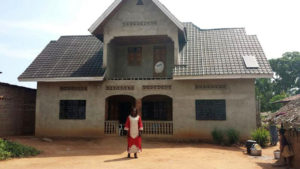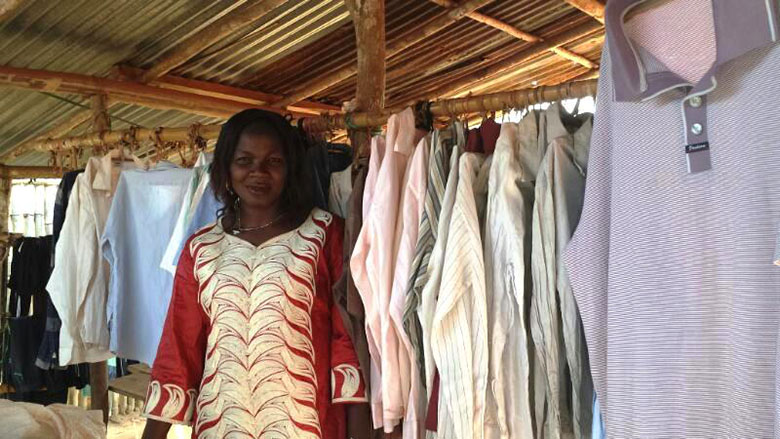The Second Congo War began in August 1998 in the Democratic Republic of the Congo (DRC), little more than a year after the First Congo War, and involved some of the same issues. The war officially ended in July 2003, when the Transitional Government of the Democratic Republic of the Congo took power. Although a peace agreement was signed in 2002, violence continued in many regions of the country, especially in the east. Hostilities have continued since in the ongoing Lord’s Resistance Army insurgency, and the Kivu and Ituri conflicts.
Named the deadliest war in modern African history, the Second Congo War has directly involved nine African countries, as well as approximately 20 separate armed groups. By 2008, the war and its aftermath had caused 5.4 million deaths, principally through disease and starvation,[8] making the Second Congo War the deadliest conflict worldwide since World War II. Another 2 million are displaced from their homes or sought asylum in neighboring countries.
Despite a formal end to the war in July 2003 and an agreement by the former belligerents to create a government of national unity, 1,000 people were still dying daily in 2004 from easily preventable cases of malnutrition and disease. The war was driven by (as present-day conflicts are) primarily by diamond merchants and trade in other conflict minerals.
The cost in human lives has been catastrophic, and largely ignored by the West, due to the country’s relative lack of oil resources.But the cost to other aspects of the nation have also been great, maybe the major one being damage to infrastructure, which was never great to begin with. Much of the Congo’s vast territory is thus poorly connected. For many such as Christine Monga, a businesswoman in Buta, communication between Kinshasa, the capital, and other provincial cities is challenging with access to rural areas near impossible.
To address this situation, the International Development Association (IDA) is financing the Pro-Routes Project that has already rehabilitated over 2,400 kilometers of priority roads.
 Alongside other businesswomen, Christine Monga sells a range of secondhand clothes such as dresses, skirts, shirts, pants, and jackets along the avenue leading to the central market in Buta, in the new province of Bas-Uélé, located 324 kilometers from Kisangani. The photo shows her positioned in front of a charming house that’s under construction, with pre-painted tile-shaped sheet metal, which captures the attention of passersby. This house is Christine’s pride and joy. Construction was made possible by the reopening of the 400-kilometer stretch of road between Kisangani and Buta, which had been impassable for more than two decades.
Alongside other businesswomen, Christine Monga sells a range of secondhand clothes such as dresses, skirts, shirts, pants, and jackets along the avenue leading to the central market in Buta, in the new province of Bas-Uélé, located 324 kilometers from Kisangani. The photo shows her positioned in front of a charming house that’s under construction, with pre-painted tile-shaped sheet metal, which captures the attention of passersby. This house is Christine’s pride and joy. Construction was made possible by the reopening of the 400-kilometer stretch of road between Kisangani and Buta, which had been impassable for more than two decades.
These infrastructure rehabilitation projects have made a world of difference for Christine. Long gone are the days when she had to travel some 800 kilometers by motorbike to get supplies in Butembo, when she was launching her secondhand clothing business with a number of female friends back in 1997, establishing the Women Against Poverty Association.
“It wasn’t easy because we were far from everything. We used to travel by motorbike between Buta and Kisangani because of the poor road conditions, and this trip could even take as long as two weeks. It was difficult and many members of the association are still suffering from the after-effects or disabilities caused by accidents. Now, with the reopening of the road, we can make the same trip in three or four days and travel to Kisangani during the daytime,” she explained. This time saver is also reflected in the increased earnings enjoyed by Christine’s friends.
Launched in August 2009, these rehabilitation works were carried out under the Pro-Routes Project (high-priority roads reopening and maintenance project), which has already rehabilitated over 2,400 kilometers of priority roads in the DRC, and is expected to rehabilitate 3,400 kilometers by February 2018.
However, the Bas-Uélé province was not the only one with dilapidated roads. In fact, of the ten provincial capitals in the country, only two (Matadi and Mbandaka) were relinked by road to Kinshasa, the national capital. Two cities (Kisangani and Bandundu) were accessible by river only, while six (Kananga, Mbuji-Mayi, Lubumbashi, Kindu, Goma, and Bukavu) could only be reached by air.
The aim of this project, which is being financed by IDA, the British cooperation agency, and the Democratic Republic of the Congo through the national road maintenance fund, is to re-establish lasting access, in a manner that is sustainable for the environment and the neighboring communities, to the main road links that can pave the way for socioeconomic recovery and the domestic and regional integration of the country.
In view of the DRC’s enormous size (2.3 million square kilometers) and the volume of financial resources needed to achieve this objective, the project adopted a gradual approach, using a low-cost, stage construction method supported by major and ongoing maintenance. This facilitated the simultaneous reopening of as many kilometers of roads as possible, thereby opening up access to as many communities as possible.
Ever since vehicular traffic between Kisangani and Buta was restored, the region has sprung to life after two decades of isolation. Transport facilities, access to basic commodities, the decline in market prices, and opportunities for trade with the Tshopo, Ituri, and Nord-Kivu provinces are contributing to the socioeconomic recovery in all areas. “Now we can travel from Kisangani to Buta in under six hours. That is quite significant when you think that in 2008, only motorbikes and bicycles transporting heavy loads in very difficult conditions were traveling on the road that had become a track. All that has changed,” asserts Théophile Ntela Lungumba, Coordinator of the Infrastructure Unit, the executing agency for the Pro-Routes Project.
Christine decided to make the most of her increased profits and the lower cement price, which had fallen from $70 per 50-kilogram bag to $35, to build a house. “I wanted to build a house like the ones I saw in Beni and Butembo,” she told me, “because now I have the resources. A younger brother who is an architect drew up the plan and there you have it. All the materials except the bricks come from Butembo,” she continued, adding “I owe my house to this road.”
Christine’s case is not an isolated one. Many people are taking advantage of the new situation created by the reopening of the road to develop their small businesses in Buta or invest in more ambitious projects such as the hotel industry, pharmacies, clothing stores, trade in grains, fishing or hunting products, hardware stores, and motorcycle sales, which are thriving all over the place. “This project is a great investment because it is helping improve people’s lives,” concludes Alexandre Dossou, World Bank Task Team Leader.

